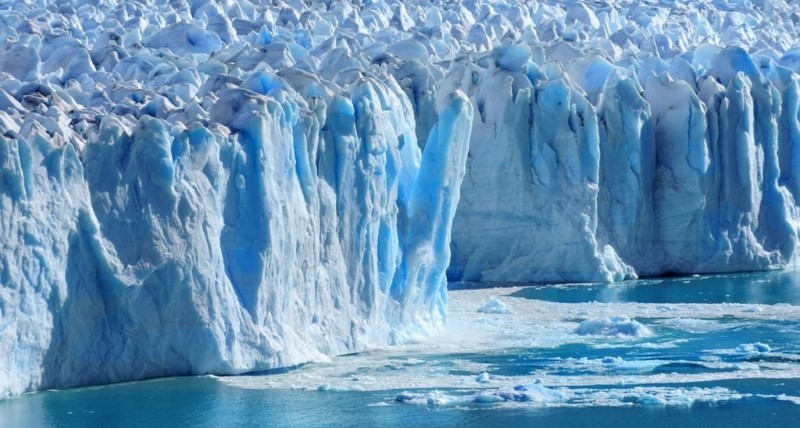Yosheta Surroop, 22, has a degree in biotechnology. She is a part-time marine biologist for the NGO EcoMode Society, which has been working to conserve our oceans since 2012. What are the steps involved in growing corals? Why is it important? She explains.

Explain coral fragmentation.
Once the coral, known as “Coral of Opportunities”, is removed from the depths of the sea, it is placed in a tub filled with seawater to keep it moist. Using pliers, coral fragments are attached to ropes, which are then attached to stable structures, such as metal structures known as “Spider Frames”. The nurseries are monitored to prevent predators such as the Crown of Thorns Starfish from wreaking havoc.
We also use micro-fragmentation techniques, where we fragment corals into very small sizes (3-5 millimeters) and fix them with coral-compatible epoxy to concrete structures.
Is it the calcium bicarbonate in the concrete that encourages coral growth?
That’s right. What’s more, the design allows adequate sunlight penetration. As the corals grow, their calcareous skeletons accumulate and bond, contributing to the coral colony. We created and reinforced 20 concrete blocks with 10, 12 and 16 millimetre diameter iron bars. The corals grown in the Pointe-aux-Feuilles nursery are then transferred to Pointe-d’Esny, where the number of fish species has increased considerably since the nurseries were established.
Can you give us examples of the fish species whose numbers have increased thanks to coral cultivation?
Yes, we can. The fish species whose numbers have increased since this coral culture initiative to save our coral reefs are the Grey Damselfish (Chrysiptera glauca), the Spottail coris (Coris caudimacula), the Honeycomb grouper (Epinephelus merra), the Convict surgeonfish (Acanthurus triostegus) and the Epaulette surgeonfish (Acanthurus nigricauda).
How quickly do corals mature?
Growth rates vary from 0.3 to 2 centimeters per year for massive corals, and up to 10 centimeters per year for branching corals.
How large is a coral nursery, and how many are there in Pointe-aux-Feuilles?
A nursery is one meter long and two meters wide. At Pointe-aux-Feuilles, we’ve installed over a hundred nurseries.
How many fragments have been planted?
To date, we have successfully planted over 35,000 coral fragments in the underwater nurseries.
Why do we need to replant corals?
Coral reefs act like marine rainforests. They are biodiversity hotspots, providing a habitat for numerous marine species such as fish, crustaceans and sponges. Given Mauritius’s dependence on this marine diversity as a Small Island Developing State (SIDS), we rely on coral reefs for the economy, with fish production of around 29,000 metric tons. The blue economy contributes 10% of Gross Domestic Product.
In addition, coral reefs protect the coast by acting as natural barriers against wave energy. This coastal protection, together with their ability to attract eco-tourists, boosts Mauritius’ economy through the tourism industry.
What is your assessment of the state of coral in this part of the island?
Coral reefs are threatened by various human activities, including agricultural and industrial waste, coastal development, and tourism. Climate change is another significant factor, as rising sea surface temperatures and ocean acidification cause the expulsion of zooxanthellae from coral polyps. These microalgae have a symbiotic relationship with corals, providing nutrients through photosynthesis in exchange for shelter. Their expulsion leads to coral death and subsequent bleaching.
What are the impacts of an oil spill on the corals at this site, like the one caused by the grounding of the MV Wakashio in 2020?
Exposure to spilled oil can have several harmful effects on corals, such as biochemical, reproductive, and developmental stress, leading to tissue death. It can also cause altered zooxanthellae activity, increased mucus production, larval expulsion, and changes in calcification. EcoMode Society has successfully begun restoring the site affected by the MV Wakashio heavy oil spill.
If corals are not cultivated, what risks do we face in the face of climate change?
If we do not replant corals, we face several significant risks. For example, the decline of coral reefs leads to a loss of habitats for fish, resulting in a decrease in the population of species in our lagoons. Consequently, this affects the fishing sector in Mauritius, which is a crucial part of our GDP.
Do we also risk losing biodiversity?
Coral reefs are home to numerous marine species, and without them, we risk losing biodiversity, including marine species unique to our region. Additionally, coral reefs act as natural barriers against wave energy. Without them, coastal erosion will increase, negatively impacting the tourism sector, which is vital to our economy. The decline of coral reefs and fish populations will also lead to job losses in the tourism and fishing sectors. Fishermen will also lose their livelihoods due to the unavailability of fish.
Therefore, replanting corals is essential to maintain ecological balance, protect our coastline, and support our economy and job sectors.
What about community engagement related to this initiative?
EcoMode Society emphasizes community engagement through strategies such as community involvement, training sessions, and workshops to raise awareness among locals, youth, and fishermen. For example, we organized a three-day workshop on coral farming at the university with Associate Professor Dr. Nadeem Nazurally. This workshop included informative lectures on the importance of coral reefs and a visit to the Pointe-aux-Feuilles nursery, where participants actively contributed to coral farming activities.
Returning to the TECH4 NATURE initiative, what kind of monitoring do the cameras in underwater domes allow you to do?
Monitoring is a crucial step after coral transplantation to ensure they grow well and are protected from human disturbances such as navigation or unsustainable fishing. We also need to protect corals from predators like the crown-of-thorns starfish, which feed on corals. Thus, the cameras in underwater domes greatly assist us in this daily monitoring task, which is essential to address these issues.
Is it difficult to visit the site every day?
Since visiting the site every day is time-consuming and requires a boat, I come here once a week. This is where the underwater cameras become invaluable. They allow us to monitor the nurseries live from our office or home. If we detect the presence of predators, we can quickly intervene to remove them. Additionally, surface cameras help us observe any unusual activity near the nursery site.
Without this technological solution installed by Huawei, how would you have monitored?
Without this, I think we would have been forced to make frequent or daily site visits to ensure coral growth and the absence of predators.
What do the surface cameras allow you to do?
They allow monitoring of the nursery area, unsustainable fishing, as well as disruptive tourist activities or navigation near Pointe-aux-Feuilles.
What challenges do you face?
A major challenge is the need for specialized skills to care for corals properly. There is not always enough space, equipment, or funding to cultivate corals on a large scale. Environmental issues such as changes in water temperature and pollution can also affect coral growth. We seriously need better protection for the already restored sites.
How important is data collection nowadays?
First of all, it provides information on the resilience of coral reefs in the face of climate change and human activities. Regular monitoring helps assess their ability to regenerate and adapt to changing environmental conditions. Data collection helps scientists understand coral biology and ecology, which is essential for developing effective restoration and conservation strategies. Finally, this data raises public awareness of the importance of preserving marine ecosystems, ensuring the long-term sustainability of coral reefs and their socio-economic benefits.
Last words: What excites you most about your work?
What excites me most about my work is the underwater world itself. It all started during my final year dissertation focused on seagrass meadows, where I developed a deep appreciation for the environment hidden beneath the waves. The diversity of species, their shapes, colors, and varied behaviors make marine life incredibly exquisite.
I feel privileged to observe this underwater world as part of my work and to contribute actively to its conservation. Being able to take action to protect and preserve this delicate ecosystem is both rewarding and inspiring for me.
Source : DéfiMédia



